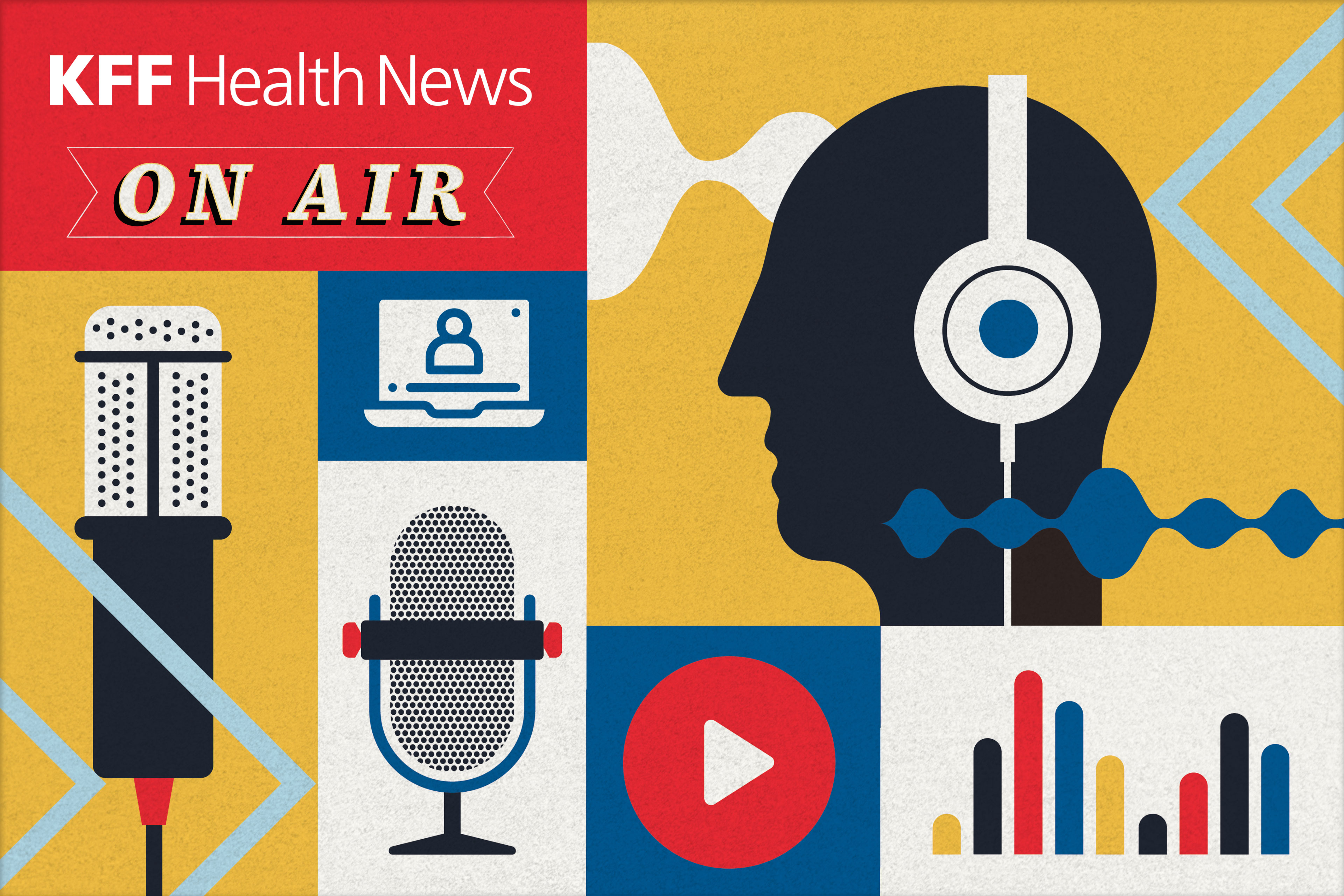Key Findings
Policymakers are considering ways to extend the enhancements made to Affordable Care Act premium taxA tax is a mandatory payment or charge collected by local, state, and national governments from individuals or businesses to cover the costs of general government services, goods, and activities. credits (PTCs) that expire at the end of the year, which could cost $350 billion over the next decade.
Any expansion of the credits should be offset by reducing other healthcare subsidies or preferences in the tax code, the largest of which is the exclusion for employer-sponsored health insurance (ESI) premiums, estimated to cost more than $5 trillion over the next decade due to reduced income and payroll taxA payroll tax is a tax paid on the wages and salaries of employees to finance social insurance programs like Social Security, Medicare, and unemployment insurance. Payroll taxes are social insurance taxes that comprise 24.8 percent of combined federal, state, and local government revenue, the second largest source of that combined tax revenue. revenue.
We analyze four options to limit the income tax exclusion for ESI at the 80th and 90th percentiles of premiums, finding these options would raise substantial amounts of revenue—up to $389 billion over the next decade—with the impacts falling primarily on the top 10 percent of earners.
Introduction
Policymakers are considering ways to extend the enhancements made to Affordable Care Act premium tax credits (PTCs) that expire at the end of the year, which were initially provided on a temporary basis as part of the American Rescue Plan Act of 2021 and later extended as part of the InflationInflation is when the general price of goods and services increases across the economy, reducing the purchasing power of a currency and the value of certain assets. The same paycheck covers less goods, services, and bills. It is sometimes referred to as a “hidden tax,” as it leaves taxpayers less well-off due to higher costs and “bracket creep,” while increasing the government’s spendin Reduction Act of 2022.[1] The PTC enhancements reduce the maximum amount eligible enrollees are required to contribute toward health insurance premiums for health insurance purchased through the Affordable Care Act exchanges and extend eligibility to people whose income is above 400 percent of the poverty level.
The Congressional Budget Office (CBO) recently estimated that permanently extending the PTC enhancements would increase the budget deficit by $350 billion over the 2026-2035 period (relative to a baseline that includes changes made under the One Big Beautiful Bill Act, or OBBBA).[2] The CBO also estimated 3.8 million more people would have health insurance in 2035 because of the extension.
Costing about $1 trillion over the next decade, PTCs are the most expensive tax credit in the tax code, including outlay effects that result from refundability.[3] Controlling the cost of these and other healthcare subsidies, which are a large and growing share of the budget and growing faster than the overall economy, is an important part of reining in the federal government’s unsustainable fiscal trajectory.[4]
Rather than reducing healthcare costs, these subsidies have often contributed to higher costs by boosting demand without addressing supply constraints and have shifted the burden of the cost from consumers to taxpayers.[5] Rising healthcare costs are expected to increase the cost of insurance premiums by more than 9 percent in 2026.[6] Any expansion of PTCs should be offset by reducing other healthcare subsidies or preferences in the tax code.
While the tax code contains several preferences for healthcare in addition to the PTCs, including health savings accounts and the deductibility of medical expenses, far and away the largest is the exclusion for employer-sponsored health insurance (ESI) premiums, which will reduce income tax revenue by $3.9 trillion over the next decade (2025-2034) according to the Treasury Department’s tax expenditureTax expenditures are departures from a “normal” tax code that lower the tax burden of individuals or businesses through an exemption, deduction, credit, or preferential rate. However, defining which tax expenditures grant special benefits to certain groups of people or types of economic activity is not always straightforward. estimates.[7] Because the exclusion also reduces payroll taxes that would otherwise apply to ESI, the total loss of federal tax revenue is estimated at $5.9 trillion over the next decade.
The exclusion for ESI has been in place since World War II, creating an incentive for employers to shift pay packages toward untaxable ESI benefits rather than taxable wages and salaries, leading to increasingly generous ESI benefits that boost demand for healthcare and put upward pressure on healthcare prices.[8] Over the last 25 years, growth in ESI benefits has outstripped growth in workers’ wages and inflation, with average annual premiums for ESI reaching $8,951 for single coverage and $25,572 for family coverage in 2024, according to the latest survey by KFF.[9] The exclusion distorts the labor market and the healthcare market, as it favors costly insurance coverage tied to employment rather than coverage that travels from one job to the next or direct payments to healthcare providers.[10]
Fully eliminating the exclusion for ESI would remove these distortions but result in a major tax increase on workers. A more incremental reform that caps the exclusion would reduce distortions at the margin, limiting the costliest healthcare plans, and still raise substantial amounts of revenue. In the analysis that follows, we examine four options to limit the income tax exclusion (leaving the payroll tax exclusion in place) for ESI at the 80th and 90th percentiles of premiums, estimating revenue and distributional impacts over the next decade.
Federal Revenue Impacts of Limiting the ESI Exclusion
We modeled the following four options for limiting the income tax exclusion for ESI beginning in 2026, relative to current law and accounting for the OBBBA:
Limit the income tax exclusion for ESI above the 80th percentile of premiums starting in 2026 (estimated to be $14,329 for individual coverage and $36,929 for family coverage in 2026 and rising thereafter to remain at the 80th percentile of premiums)[11]
Limit the income tax exclusion for ESI above the 80th percentile of premiums in 2026, thereafter indexing the 2026 nominal ESI cap to inflation (as measured by core PCE)
Limit the income tax exclusion for ESI above the 90th percentile of premiums starting in 2026 (estimated to be $18,752 for individual coverage and $49,201 for family coverage in 2026 and rising thereafter to remain at the 90th percentile of premiums)
Limit the income tax exclusion for ESI above the 90th percentile of premiums in 2026, thereafter indexing the 2026 nominal ESI cap to inflation (as measured by core PCE)
We estimate a range of federal revenue effects for these proposals (see Table 1).[12] Option 3 would raise the least revenue over the budget window, from 2026 to 2035: $138 billion on a conventional basis, or $135 billion on a dynamic basis (i.e., accounting for economic impacts arising from an increase in marginal tax rates on labor income).[13]
Option 2 would raise the most revenue over the budget window: $389 billion on a conventional basis, or $371 billion on a dynamic basis. Options 2 and 4 raise additional revenue in the years after 2026, relative to Options 1 and 3, because the ESI cap that grows with inflation applies to a growing share of healthcare plans over time.
Table 1. Revenue Effects of Limiting the Tax Exclusion for ESI ($ Billions)
Source: Tax Foundation General Equilibrium Model, September 2025
Distributional Impacts of Limiting the ESI Exclusion
Distributionally, we estimate that Option 1 would reduce after-tax income by 0.2 percent overall in 2026 and in 2035, conventionally measured, with essentially all of the impact falling on the top 10 percent of earners. Accounting for the economic impacts does not substantially change the distributional impacts. The other three policy options result in similar distributional impacts (see Table 2).
Table 2. Distributional Effects of Limiting the Tax Exclusion for ESI (Percent Change in After-Tax Income, Conventionally Measured)
Note: Market income includes adjusted gross incomeFor individuals, gross income is the total of all income received from any source before taxes or deductions. It includes wages, salaries, tips, interest, dividends, capital gains, rental income, alimony, pensions, and other forms of income.
For businesses, gross income (or gross profit) is the sum of total receipts or sales minus the cost of goods sold (COGS)—the direct costs of producing goods (AGI) plus 1) tax-exempt interest, 2) non-taxable Social Security income, 3) the employer share of payroll taxes, 4) imputed corporate tax liability, 5) employer-sponsored health insurance and other fringe benefits, 6) taxpayers’ imputed contributions to defined-contribution pension plans. Market income levels are adjusted for the number of exemptions reported on each return to make tax units more comparable. After-tax income is market income less: individual income taxAn individual income tax (or personal income tax) is levied on the wages, salaries, investments, or other forms of income an individual or household earns. The U.S. imposes a progressive income tax where rates increase with income. The Federal Income Tax was established in 1913 with the ratification of the 16th Amendment. Though barely 100 years old, individual income taxes are the largest source, corporate income taxA corporate income tax (CIT) is levied by federal and state governments on business profits. Many companies are not subject to the CIT because they are taxed as pass-through businesses, with income reportable under the individual income tax., payroll taxes, estate and gift taxA gift tax is a tax on the transfer of property by a living individual, without payment or a valuable exchange in return. The donor, not the recipient of the gift, is typically liable for the tax., customs duties, and excise taxes. The 2026 income break points by percentile are: 20%-$17,735; 40%-$38,572; 60%-$73,905; 80%-$130,661; 90%-$188,849; 95%-$266,968; 99%-$611,194. Tax units with negative market income and non-filers are excluded from the percentile groups but included in the totals.Source: Tax Foundation General Equilibrium Model, September 2025
Conclusion
Improving neutrality is an important goal of tax policy, and limiting the exclusion for ESI would provide more neutral treatment of major forms of compensation, reducing distortions in the labor market and healthcare market. Capping the exclusion at the 80th or 90th percentile of premiums, as proposed here, would reduce distortions and raise substantial amounts of revenue, primarily impacting high earners with exceptionally generous ESI benefits.
Because the proposals raise marginal tax rates on compensation, we find small negative impacts on GDP. However, to the extent the proposals lead employers to shift toward other forms of compensation, such as cash, that are preferred by workers, the economic harm would be reduced. To the extent the proposals reduce demand for healthcare and improve efficiency in the healthcare market, they may reduce healthcare prices generally, broadly benefiting consumers of healthcare (employer-sponsored or otherwise).
Stay informed on the tax policies impacting you.
Subscribe to get insights from our trusted experts delivered straight to your inbox.
Subscribe
[1] Robert King and Benjamin Guggenheim, “House Republicans Launch Bill to Extend Health Subsidies Past Midterms,” Politico, Sep. 4, 2025, https://www.politico.com/news/2025/09/04/aca-enhanced-tax-credits-extension-00544565.
[2] Congressional Budget Office, “The Estimated Effects of Enacting Selected Health Coverage Policies on the Federal Budget and on the Number of People With Health Insurance,” Sep. 18, 2025, https://www.cbo.gov/system/files/2025-09/61734-Health.pdf.
[3] US Treasury Department, “Tax Expenditures Fiscal Year 2026,” Nov. 27, 2024, https://home.treasury.gov/system/files/131/Tax-Expenditures-FY2026.pdf; Joint Committee on Taxation, “Estimates of Federal Tax Expenditures for Fiscal Years 2024-2028,” Dec. 11, 2024, https://www.jct.gov/publications/2024/jcx-48-24/.
[4] William McBride, Erica York, Alex Durante, and Garrett Watson, “The Unsustainable US Debt Course and Impacts of Potential Tax Changes, “ Tax Foundation, Jan. 14, 2025, https://taxfoundation.org/research/all/federal/us-debt-budget-taxes-spending-social-security-medicare/; PTCs and other major healthcare programs are about 28 percent of the federal budget this year and projected to grow to more than 30 percent over the next 10 years. Major healthcare programs are projected to grow about 5.6 percent annually over the next decade, versus about 3.8 percent growth for nominal GDP. See: Congressional Budget Office, “The Budget and Economic Outlook: 2025 to 2035,” Jan. 17, 2025, https://www.cbo.gov/publication/60870.
[5] Maria Polyakova and Stephen P. Ryan, “Subsidy Targeting with Market Power,” NBER working paper 26367, Aug. 2021, https://www.nber.org/papers/w26367; Marika Cabral, Michael Geruso, and Neale Mahoney, “Do Larger Health Insurance Subsidies Benefit Patients or Producers? Evidence from Medicare Advantage,” American Economic Review 108:8 (August 2018), https://www.aeaweb.org/articles?id=10.1257/aer.20151362; Cynthia Cox, Jared Ortaliza, Emma Wagner, and Krutika Amin, “Health Care Costs and Affordability,” KFF, May 28, 2024, https://www.kff.org/health-costs/health-policy-101-health-care-costs-and-affordability/?entry=table-of-contents-introduction; Jared Ortaliza, Anna Cord, Matt McGrough, Justin Lo, and Cynthia Cox, “Inflation Reduction Act Health Insurance Subsidies: What is Their Impact and What Would Happen if They Expire?,” KFF, Jul. 26, 2024, https://www.kff.org/affordable-care-act/inflation-reduction-act-health-insurance-subsidies-what-is-their-impact-and-what-would-happen-if-they-expire/; Mark Pauly, Scott Harrington, and Adam Leive, “Sticker Shock in Individual Insurance under Health Reform,” NBER working paper 20223, June 2014, https://www.nber.org/papers/w20223.
[6] Anna Wilde Mathews, “Health Insurance Costs for Businesses to Rise by Most in 15 Years,” The Wall Street Journal, Sep. 10, 2025, https://www.wsj.com/health/healthcare/health-insurance-costs-rise-6cc1b934.
[7] According to Treasury Department estimates, after the exclusion for ESI, the largest healthcare tax expenditure is the PTC, followed by the deductibility of medical expenses (costing $243 billion over the next decade), health savings accounts ($181 billion), the deductibility of charitable contributions to health institutions ($153 billion), and the deductibility of self-employed medical insurance premiums ($143 billion) among other smaller tax expenditures. In addition, nonprofit hospitals are exempt from corporate tax, which, although unaccounted for in official estimates, may reduce federal revenue by approximately $200 billion or more over the next decade. See: US Treasury Department, “Tax Expenditures Fiscal Year 2026,” Nov. 27, 2024, https://home.treasury.gov/system/files/131/Tax-Expenditures-FY2026.pdf; Scott Hodge, “Reining in America’s $3.3 Trillion Tax-Exempt Economy,” Jun. 18, 2024, https://taxfoundation.org/research/all/federal/501c3-nonprofit-organization-tax-exempt/; Joint Committee on Taxation, “Estimates of Federal Tax Expenditures for Fiscal Years 2024-2028,” Dec. 11, 2024, https://www.jct.gov/publications/2024/jcx-48-24/.
[8] Michael Cannon, “Tackling America’s Fundamental Health Care Problem,” Cato Institute, July/August 2022, https://www.cato.org/policy-report/july/august-2022/tackling-americas-fundamental-health-care-problem; Congressional Budget Office, “Reduce Tax Subsidies for Employment-Based Health Insurance,” Dec. 7, 2022, https://www.cbo.gov/budget-options/58627; David Powell, “The Distortionary Effects of the Health Insurance Tax Exclusion,” American Journal of Health Economics 5:4 (Fall 2019), https://www.journals.uchicago.edu/doi/10.1162/ajhe_a_00126.
[9] KFF, “2024 Employer Health Benefits Survey,” Oct. 9, 2024, https://www.kff.org/health-costs/2024-employer-health-benefits-survey/.
[10] Health savings accounts can now be used to pay fees for direct primary care arrangements, due to changes made as part of OBBBA, and can be used to pay for other out-of-pocket healthcare expenses, subject to annual contribution limits and other constraints. The tax code provides other limited preferences for certain types of out-of-pocket healthcare expenses, such as deductibility of medical expenses above a certain threshold. See: David Kopans, Erin Sweeney, and Lindsey LePlae, “Paying for Direct Primary Care Arrangements with HSAs is Now Permitted – with Caveats,” DLA Piper, Aug. 6, 2025, https://www.dlapiper.com/en-us/insights/publications/2025/08/paying-for-direct-primary-care-arrangements-with-hsa;
Michael Cannon, “Tackling America’s Fundamental Health Care Problem,” Cato Institute, July/August 2022, https://www.cato.org/policy-report/july/august-2022/tackling-americas-fundamental-health-care-problem.
[11] US Bureau of Labor Statistics (BLS), “Medical Care Premiums in the United States, March 2023,” https://www.bls.gov/ebs/factsheets/medical-care-premiums-in-the-united-states.htm; BLS, “Table 3. Medical Plans: Share of Premiums Paid by Employer and Employee for Single Coverage,” https://www.bls.gov/news.release/ebs2.t03.htm; BLS, “Table 4. Medical Plans: Share of Premiums Paid by Employer and Employee for Family Coverage,” https://www.bls.gov/news.release/ebs2.t04.htm.
[12] For a description of Tax Foundation’s model, see: Huaqun Li, Garrett Watson, and Erica York, “Overview of the Tax Foundation’s General Equilibrium Model,” Tax Foundation, Mar. 5, 2025, https://taxfoundation.org/research/all/federal/general-equilibrium-model/. We assume ESI benefits grow at the same rate as wages and salaries (as do the 80th and 90th percentile of premiums), which is a faster growth rate than the CBO projects for the core personal consumption expenditures (PCE) price index, used to cap the ESI exclusion in Options 2 and 4. We do not assume employers shift pay packages toward taxable wages and salaries in response to the proposals, and thus might understate additional payroll tax revenue that could result. Our model does not capture the micro-level heterogeneity of ESI benefits at each income level, and thus might understate the revenue effects of capping the ESI exclusion. Our model does not capture tax avoidance behavior that is particular to ESI and other untaxed fringe benefits. To the degree that employers substitute other untaxed fringe benefits for ESI, our model will overstate the revenue effects of limiting the ESI exclusion. Additionally, our model does not explicitly capture the interaction effects with PTCs, which may overstate the revenue effects of limiting the ESI exclusion. On net, these effects may be largely offsetting for revenue estimating purposes.
[13] All four policy options reduce GDP over the long run by a small amount (less than 0.05 percent). We assume workers are indifferent between a dollar of cash compensation and a dollar of ESI, which overstates the economic harm to the extent workers prefer cash and employers accommodate this preference by increasing cash compensation as a share of total compensation.
Share this article





























